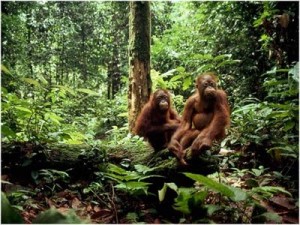The most threatened forests around the world – Part 3
Saturday, April 21st, 2012 1:42:27 by Fouad Ashraf
This article is a continuation of ‘The most threatened forests around the world – Part 2’.
More than 7,100 islands lie within the borders of the Philippines, described as one of the most biologically rich countries. Many endemic species are confined to forest fragments that cover only 7% of the original extent of this place.
This includes approximately 6,000 species of plants and many species of birds like the eagle of the Philippines (Pithecophaga jefferyi), the second species of the world’s largest eagles. Amphibian endemism is also unusually high and drives unique species
like the tiger, the flying frog (Rhacophorus pardalis), with special adaptations to plan, including extra flaps of skin and tissue between the fingers to lift during flight.
The Philippines is also one of the areas most at risk of extinction. Historically it has been cleared for timber and, at present, the remaining forests are also extracted to grow and meet the growing needs of the country’s growth rate and extreme rural poverty.
The livelihoods of about 80 million people depend heavily on natural resources.
It extends along the Atlantic coast of Brazil and parts of Paraguay, Argentina and Uruguay. It also includes the archipelago of Fernando de Noronha and other islands off the Brazilian coast. It houses 20,000 plant species, 40% of which are endemic. However,
remains less than 10% of forests.
More than two dozen species of endangered vertebrate critical cling to survival in the region, including lion tamarins and six bird species that are restricted to a small portion of forest in northeastern Brazil.
Beginning with sugarcane plantations, and then coffee, this region has been losing habitat for hundreds of years. Now, with increased expansion of Rio de Janeiro and Sao Paulo, the Atlantic forest is under great pressure due to problems related to urbanization.
About 100 million people and industries that account for most of the country’s economic output, including manufacturing, agriculture, depend on the part of the forest that is preserved for the supply of fresh water.
Tags: An inconvenient truth, chavi, nature, xaviShort URL: https://www.newspakistan.pk/?p=19800

















